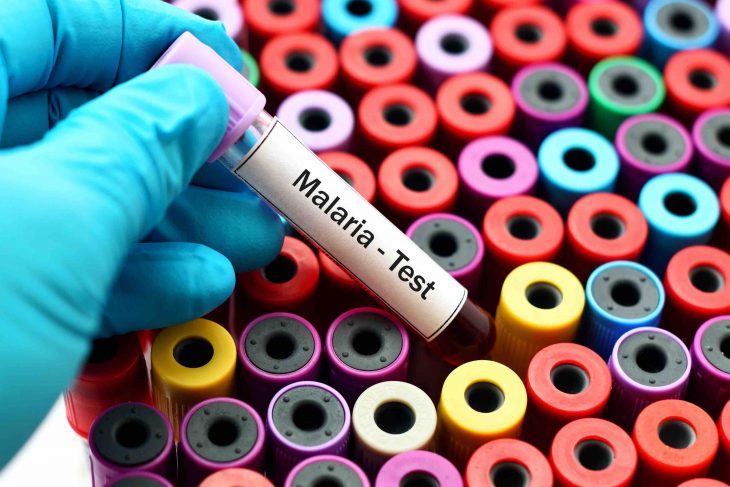
Malaria is a life-threatening disease that has been a global health concern for centuries. Despite advancements in medical science, it continues to affect millions of people worldwide, particularly in developing countries. This article delves into 30 fascinating facts about malaria, providing a comprehensive understanding of the disease, its causes, symptoms, treatment, and prevention methods.
Understanding Malaria
Caused by Parasites
Malaria is caused by Plasmodium parasites. There are five species of Plasmodium that can infect humans, but Plasmodium falciparum and Plasmodium vivax pose the greatest threat.
Transmitted by Mosquitoes
The disease is transmitted to humans through the bites of infected female Anopheles mosquitoes.
Life Cycle of the Parasite
The life cycle of the Plasmodium parasite involves both humans and mosquitoes, making it a complex disease to control and eliminate.
Symptoms
Symptoms of malaria include fever, headache, chills, and vomiting. If not treated within 24 hours, P. falciparum malaria can progress to severe illness and death.
Global Impact of Malaria
Worldwide Prevalence

Malaria is prevalent in more than 100 countries, primarily in tropical and subtropical regions.
High Mortality Rate
In 2019, there were an estimated 229 million cases of malaria worldwide and 409,000 deaths, according to the World Health Organization (WHO).
Most Affected Region
The African Region carries a disproportionately high share of the global malaria burden, accounting for 94% of malaria cases and deaths in 2019.
Children and Pregnant Women
Malaria is particularly dangerous for pregnant women and children under five, who are more susceptible to infection, illness, and death.
Prevention and Control
Insecticide-Treated Mosquito Nets (ITNs)
ITNs are one of the most effective ways to prevent malaria transmission. They provide a physical barrier and kill mosquitoes that come into contact with the insecticide.
Indoor Residual Spraying (IRS)
IRS with insecticides is another powerful way to rapidly reduce malaria transmission.
Antimalarial Drugs
Antimalarial drugs can also be used to prevent malaria, especially for travelers to malaria-endemic areas and pregnant women living in such areas.
Treatment of Malaria
Artemisinin-Based Combination Therapies (ACTs)
ACTs are the first-line treatment for uncomplicated malaria caused by P. falciparum.
Resistance to Antimalarial Drugs

Resistance to antimalarial drugs is a recurring problem. Resistance to artemisinin has been detected in five countries of the Greater Mekong subregion.
Severe Malaria
Severe malaria is a medical emergency and requires hospitalization. The treatment of choice for severe malaria is intravenous (IV) or intramuscular (IM) artesunate.
Malaria and the Environment
Climate Change and Malaria
Changes in climate, such as variations in temperature and rainfall, can affect the distribution and intensity of malaria.
Urbanization and Deforestation
Urbanization and deforestation can influence the distribution of malaria vectors and change the risk of malaria transmission.
Malaria Research and Development
Malaria Vaccines
The RTS, S/AS01 (trade name Mosquirix) is the first, and currently the only, vaccine to be endorsed by the WHO for use against P. falciparum malaria.
Gene DriveTechnology
Scientists are exploring the use of gene drive technology to modify mosquito populations and reduce malaria transmission.
New Antimalarial Drugs
Research is ongoing to develop new antimalarial drugs, particularly ones that can overcome resistance.
Malaria Elimination and Eradication
Malaria Elimination

Malaria elimination, defined as the interruption of local transmission of a specified malaria parasite species in a defined geographical area, has been achieved in several countries.
Malaria Eradication
Malaria eradication refers to the permanent reduction to zero of the worldwide incidence of malaria infection. This has not yet been achieved.
Historical and Cultural Aspects of Malaria
Historical References
References to malaria-like symptoms have been found in ancient texts from China, India, the Middle East, Greece, and Rome.
Malaria and War
Malaria has played a significant role in many wars throughout history, causing more deaths than battle injuries in some cases.
World Malaria Day
World Malaria Day is observed on April 25 each year to raise awareness about the global effort to control and eliminate malaria.
Conclusion
Malaria is a complex disease with a significant global impact. Despite the challenges, progress has been made in controlling and eliminating malaria through effective prevention and treatment strategies. However, the fight against malaria is far from over. Continued research and development, along with sustained funding and political commitment, are crucial to achieving the goal of a malaria-free world.
Frequently Asked Questions (FAQs)
What is malaria?
Malaria is a life-threatening disease caused by Plasmodium parasites and transmitted to humans through the bites of infected female Anopheles mosquitoes.
What are the symptoms of malaria?
Symptoms of malaria include fever, headache, chills, and vomiting. If not treated within 24 hours, P. falciparum malaria can progress to severe illness and death.
How can malaria be prevented?
Malaria can be prevented through measures such as the use of insecticide-treated mosquito nets (ITNs), indoor residual spraying (IRS), and antimalarial drugs.
How is malaria treated?
Malaria is treated with antimalarial drugs. The first-line treatment for uncomplicated malaria caused by P. falciparum is artemisinin-based combination therapies (ACTs).
What is the global impact of malaria?
Malaria is prevalent in more than 100 countries, primarily in tropical and subtropical regions. In 2019, there were an estimated 229 million cases of malaria worldwide and 409,000 deaths.
Was this page helpful?
Our commitment to delivering trustworthy and engaging content is at the heart of what we do. Each fact on our site is contributed by real users like you, bringing a wealth of diverse insights and information. To ensure the highest standards of accuracy and reliability, our dedicated editors meticulously review each submission. This process guarantees that the facts we share are not only fascinating but also credible. Trust in our commitment to quality and authenticity as you explore and learn with us.


